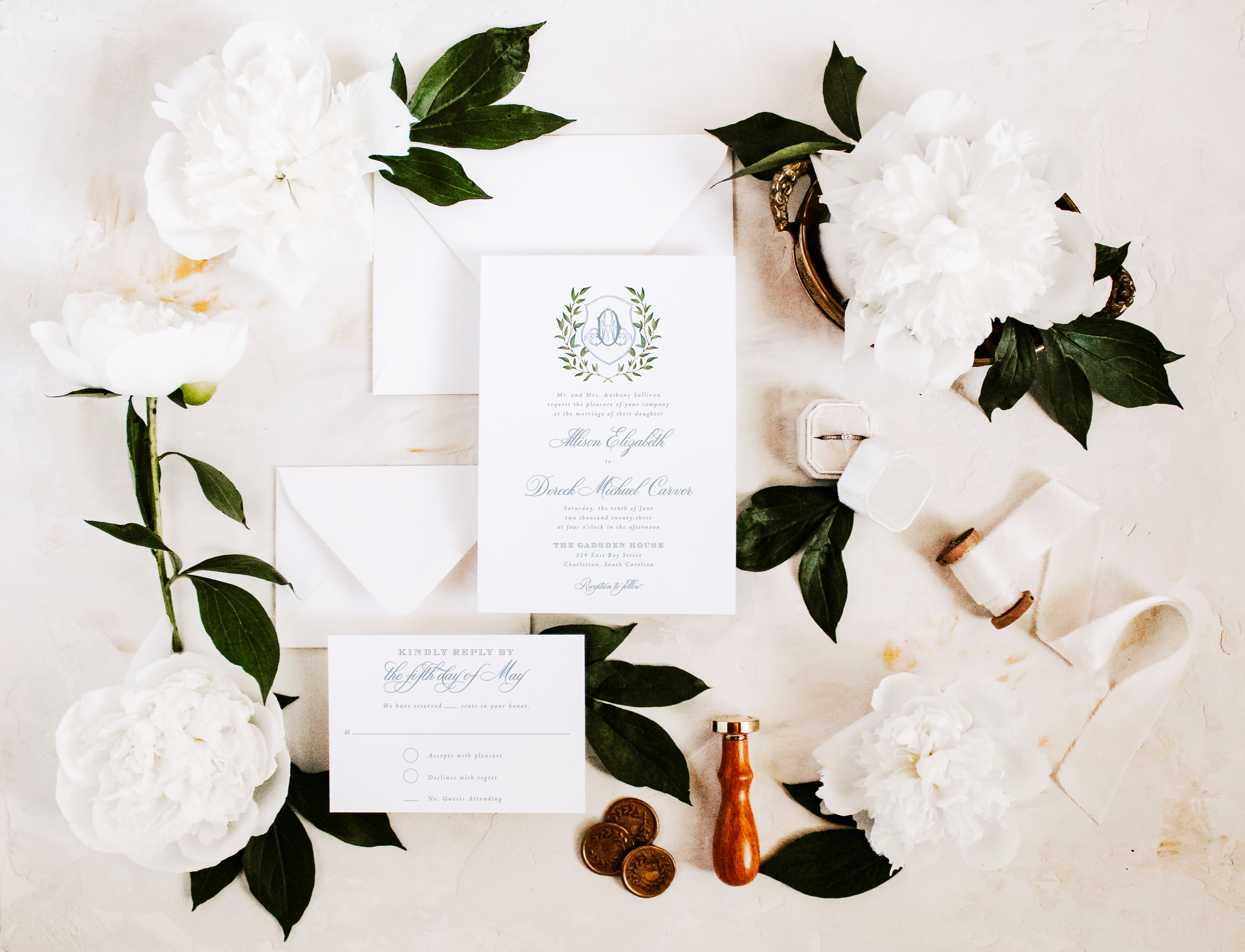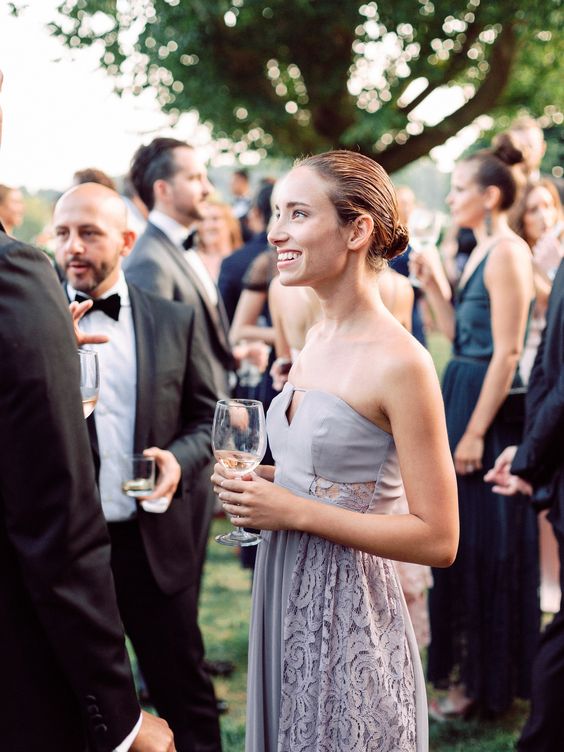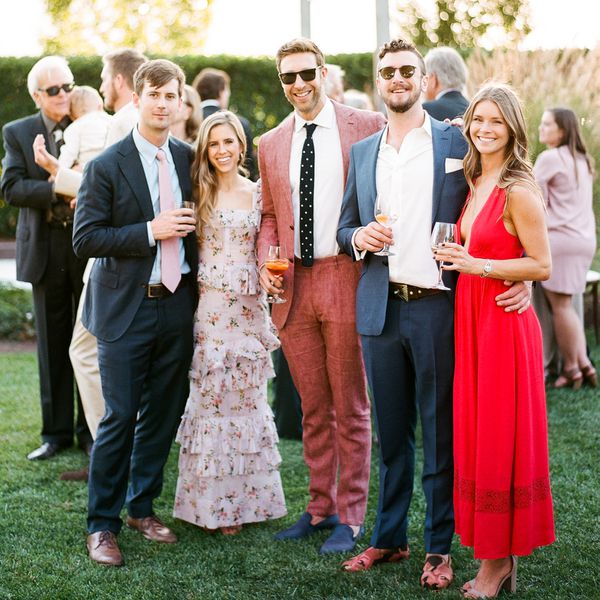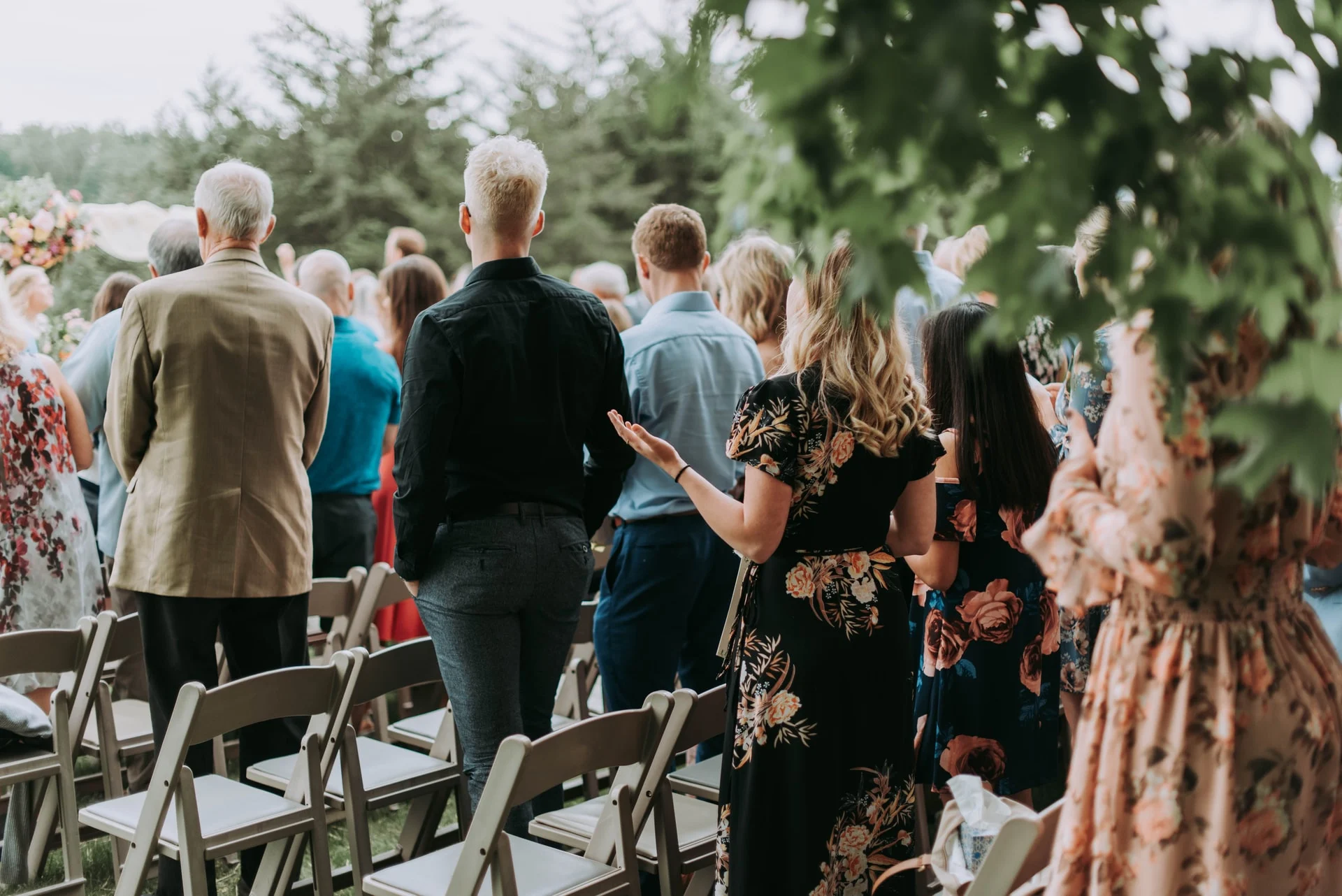When it comes to dressing for a wedding, deciphering the dress code can sometimes feel like cracking a secret code. With terms like “black tie” and “semi-formal” floating around, it’s essential to understand what they mean and how to convey the style of your wedding on your invitations. Let’s dive into the differences in wedding guest attire and tips on ensuring your guests know how to dress properly for your special day.
Black Tie
Black tie attire is the epitome of formal elegance. For men, it typically means wearing a tuxedo, a black bow tie, a white dress shirt, and black formal shoes. Women should opt for floor-length evening gowns or sophisticated cocktail dresses. When conveying the black tie dress code on your invitations, use formal language and mention “black tie” explicitly to leave no room for ambiguity.
Formal or Black Tie Optional
Formal or black tie optional attire provides a bit more flexibility for your guests. Men can choose between a tuxedo or a formal dark suit paired with a dress shirt and tie. Women have the freedom to wear a floor-length gown, a dressy cocktail dress, or a dressy separates outfit. It’s important to communicate this dress code clearly on your invitations, using phrases like “formal attire” or “black tie optional.”
semi-formal
Semi-formal attire strikes a balance between formal and casual. For men, it usually means a suit and tie, with the option to omit the tie for a slightly more relaxed look. Women can opt for a chic cocktail dress or a dressy skirt and blouse combination. When conveying a semi-formal dress code, you can use terms like “cocktail attire” or “semi-formal attire” on your invitations.
Casual or Informal
Casual or informal dress codes are generally reserved for more relaxed and laid-back weddings. For men, this can mean wearing slacks or chinos with a dress shirt or a polo shirt. Women can choose a sundress, a maxi dress, or a dressy skirt and top combination. When you want to set a casual tone for your wedding, ensure your invitations reflect this by using more informal language and avoiding any mention of specific dress codes.
Tips for Conveying the Style of Your Wedding on Invitations

Now that you understand the differences in wedding guest attire, it’s crucial to effectively convey the style of your wedding on your invitations. Here are a few tips:
Mention the dress code explicitly: Whether it’s black tie, formal, or casual, clearly state the dress code on your invitations.
Use descriptive language: Include specific terms like “black tie” or “cocktail attire” to eliminate any confusion.
Provide additional guidance: If your wedding has a unique theme or requires specific attire, mention it in the invitation or provide a separate note with additional details.
Consider visual cues: Incorporate design elements on your invitations that reflect the style or theme of your wedding, giving guests a visual clue about what to expect.
Remember, effective communication is key to ensuring your guests feel confident and comfortable in their attire choices. By conveying the style of your wedding clearly on your invitations, you’ll set the stage for a truly memorable and stylish celebration.
Customer Service: M-F 9-5 EST
Closed weekends & holidays
We are not currently scheduling
in-person appointments.

Hours
Customer Service – Monday -Friday 9AM – 5PM – Online Only
We are no longer accepting in-person appointments.



